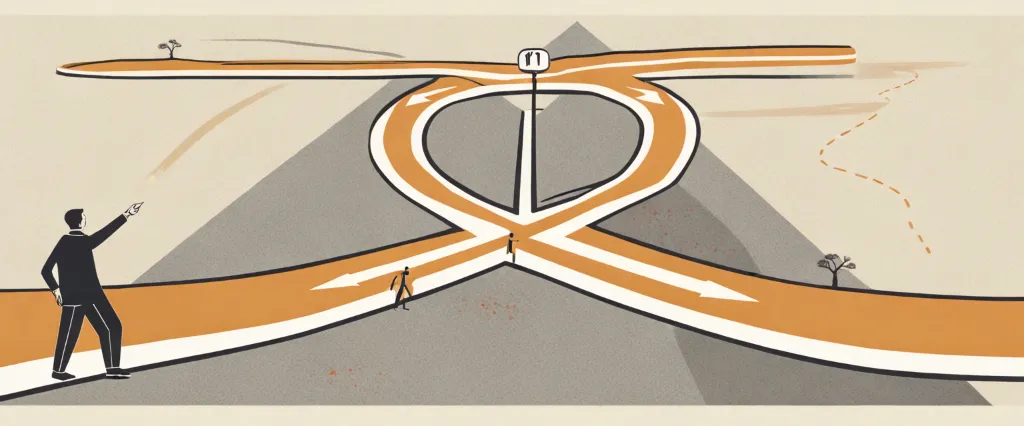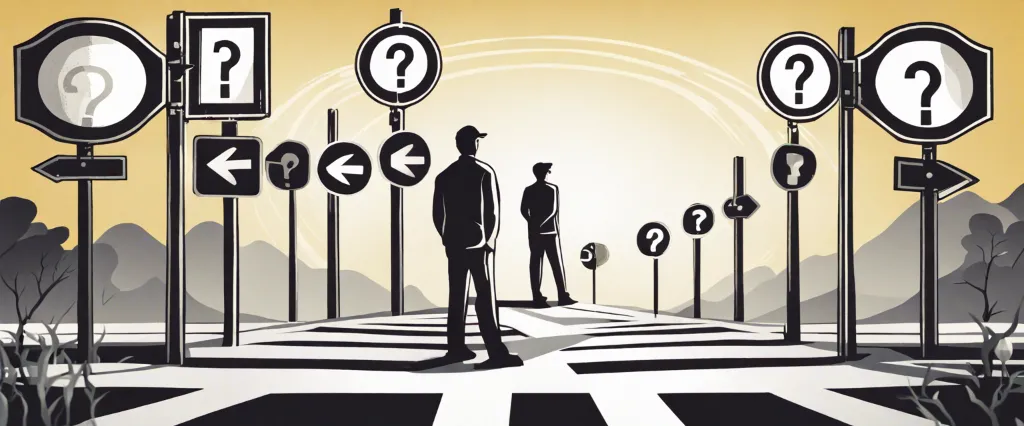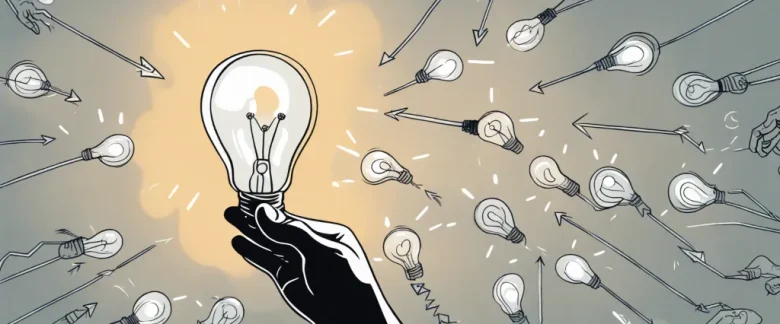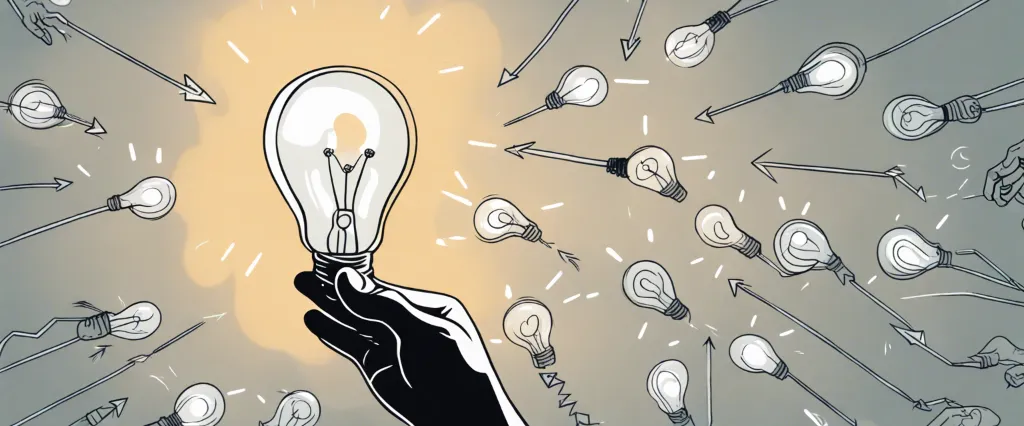In “The Art of Thinking Clearly,” Rolf Dobelli illuminates the numerous cognitive biases that cloud our judgement, leading to poor decision-making. Through a compelling exploration of real-life examples and psychological research, Dobelli arms readers with the tools to navigate the treacherous minefield of irrational thinking. As a Swiss writer, entrepreneur, and thinker, Rolf Dobelli is renowned for his rational and analytical approach to problem-solving. With an academic background in business and philosophy, he has consistently challenged conventional wisdom and provided invaluable insights into the art of clear thinking.
Chapter 1: Cognitive Biases – Exploring the various cognitive biases that cloud our thinking and decision-making processes.
In Chapter 1 of “The Art of Thinking Clearly” by Rolf Dobelli, the author delves into the concept of cognitive biases and how they impact our thinking and decision-making processes. Dobelli highlights that our minds are not as rational as we might believe, as they are influenced by a multitude of biases that cloud our judgment.
The chapter begins by explaining that cognitive biases are systematic errors in our thinking that occur due to mental shortcuts or heuristics our brains employ in order to make quick decisions. These biases can lead to flawed reasoning and incorrect conclusions. Dobelli warns that being aware of these biases is crucial in order to make better judgments.
One of the biases discussed is confirmation bias, whereby people tend to seek out information that confirms their existing beliefs while disregarding contradictory evidence. This bias reinforces our existing view and prevents us from objectively evaluating different perspectives.
Another bias explored is the hindsight bias, where people tend to believe that an event was easily predictable after it has occurred. This bias can prevent us from learning from past mistakes since we falsely believe that we could have easily predicted the outcome.
Furthermore, the chapter highlights the sunk cost fallacy, which involves sticking to a failing endeavor simply because we have invested time, money, or effort into it. This bias prevents us from considering future costs and benefits objectively and can lead to detrimental decisions.
Overall, Chapter 1 of “The Art of Thinking Clearly” introduces readers to the numerous cognitive biases that impact our thinking. Understanding and recognizing these biases is crucial for cultivating clearer thinking and making better decisions in various aspects of life.
Chapter 2: Confirmation Bias – Discussing the tendency to seek out information that confirms our preexisting beliefs and ignoring contradictory evidence.
Chapter 2 of “The Art of Thinking Clearly” by Rolf Dobelli explores the concept of confirmation bias, which refers to our natural inclination to seek out and embrace information that supports our existing beliefs, while disregarding or downplaying contradictory evidence.
Confirmatory bias is deeply ingrained in human nature and affects our decision-making process in all aspects of life, from personal beliefs and political opinions to investment strategies and relationship choices. Dobelli emphasizes that confirmation bias is universal and affects all individuals, regardless of their intelligence or education.
The chapter delves into various psychological experiments and studies that highlight how confirmation bias influences our perceptions and behaviors. For instance, subjects in an experiment were asked to evaluate statements, some of which supported and others that contradicted their political beliefs. It was observed that individuals tended to accept information that confirmed their views without critically analyzing the evidence, while rejecting opposing viewpoints.
Confirmation bias has profound consequences, leading to closed-mindedness, polarized societies, and faulty decision-making. Dobelli emphasizes that recognizing and overcoming confirmation bias is essential for accurate understanding and optimal decision-making. To do this, he suggests adopting an approach of actively seeking out and considering dissenting viewpoints, verifying sources of information, and being open to changing our views in the presence of new evidence.
In conclusion, chapter 2 of “The Art of Thinking Clearly” explores confirmation bias, the human tendency to favor information that aligns with our preexisting beliefs and to disregard contradictory evidence. The chapter emphasizes the importance of recognizing and overcoming this bias to make more rational and informed choices in various aspects of our lives.
Chapter 3: Availability Bias – Highlighting how our judgments are often influenced by the ease with which examples or instances come to mind.
Chapter 3 of “The Art of Thinking Clearly” by Rolf Dobelli, titled “Availability Bias,” explores the concept that our judgments are often influenced by the ease with which examples or instances come to mind. This cognitive bias, known as availability bias, leads us to overestimate the probability of events based on their vividness or recentness in our memory.
The chapter introduces availability bias by providing several fascinating examples. For instance, media coverage of rare and shocking events sensationalizes them in our minds, leading us to believe they happen more frequently than they actually do. Dobelli notes that this bias also affects our decision-making process. When we make choices based on readily available information, without considering the context or probability, we are likely to make flawed judgments.
The author further explores various forms of availability bias, including the “vividness trap.” Vivid experiences, such as accidents or tragedies, become deeply ingrained in our memories, making them appear more common than they are. This can lead to irrational fears or risk assessments. Moreover, the media focuses on negative news, which reinforces our perception of the world as dangerous, deviating from the statistical reality.
Dobelli explains that availability bias can be counteracted by employing statistical thinking and being aware of the biases that affect our judgments. By seeking reliable data and considering the context and base rates, we can mitigate the impact of this cognitive bias. Additionally, he advises embracing skepticism and critical thinking to avoid making hasty decisions solely based on easily available information.
Overall, Chapter 3 of “The Art of Thinking Clearly” sheds light on how availability bias influences our thinking and decision-making processes. Recognizing this bias and employing rational thinking practices can help us make wiser and more accurate judgments.
Chapter 4: Overconfidence – Examining the tendency to overestimate our abilities and the risks associated with this bias.

Chapter 4 of “The Art of Thinking Clearly” by Rolf Dobelli delves into the concept of overconfidence – the tendency to overestimate our abilities and the risks associated with this bias. Dobelli highlights how our tendency towards overconfidence can often lead us astray in decision-making and distort our perception of reality.
The author begins by presenting the Dunning-Kruger effect, a cognitive bias which explains that incompetent individuals tend to overestimate their abilities, while highly skilled individuals tend to underestimate theirs. He warns us against falling victim to this bias ourselves, as it can hinder our personal growth and lead to poor decisions.
Dobelli then explores the illusion of skill and the misguided belief that success in one area implies competence in others. He points out that expertise in a particular field does not necessarily translate to expertise in unrelated areas. Additionally, he emphasizes the dangers of relying solely on intuition and anecdotal evidence rather than seeking out valuable data and statistics.
Furthermore, the chapter discusses the detrimental effects of overconfidence in financial matters, such as overestimating investment returns and underestimating risks. The author highlights several instances where overconfident investors have suffered significant losses due to their unwarranted belief in their own abilities.
To counteract overconfidence, Dobelli suggests adopting a healthy dose of skepticism and seeking objective feedback. He encourages readers to develop humility, acknowledge their limitations, and actively challenge their assumptions.
In summary, Chapter 4 of “The Art of Thinking Clearly” alerts readers to the dangers of overconfidence and its implications in decision-making. By highlighting the various cognitive biases associated with overconfidence, Dobelli offers valuable insights on cultivating a more realistic and rational mindset.
Chapter 5: Sunk Cost Fallacy – Discussing the irrational behavior of continuing with a project or investment simply because we have already invested time, money, or effort into it.
Chapter 5 of “The Art of Thinking Clearly” by Rolf Dobelli explores the concept of the sunk cost fallacy, which refers to the irrational tendency of individuals to continue pursuing a project or investment, even when it has become apparent that it is no longer worthwhile, solely because they have already invested significant time, money, or effort into it.
Dobelli explains that this fallacy arises from our fear of wasting resources or admitting failure. Instead of making decisions based on the future benefits and costs, we become fixated on recouping our initial investment. Our inability to detach ourselves emotionally from sunk costs prevents us from making rational choices.
The chapter provides various relatable examples to illustrate this fallacy, such as people remaining in unfulfilling relationships, holding onto old possessions, or pouring additional funds into failing business ventures. Dobelli highlights how the sunk cost fallacy often leads to poor decision-making, as it blinds us to the current circumstances and prevents us from exploring alternative options.
To overcome the sunk cost fallacy, Dobelli suggests embracing the idea of cutting our losses and moving on. He emphasizes the importance of recognizing the fallacy and not being swayed by past investments, but rather focusing on the current and future costs and benefits. By understanding that past investments should not determine our present decisions, we can make more rational choices and avoid unnecessary losses.
Overall, Chapter 5 of “The Art of Thinking Clearly” delves into the psychological tendency to cling to sunk costs and provides insights on how to overcome this fallacy, enabling readers to make more informed and rational decisions.
Chapter 6: Social Proof – Exploring how we often rely on the actions and opinions of others as a guide for our own behavior and decision-making.
Chapter 6 of “The Art of Thinking Clearly” by Rolf Dobelli discusses the concept of Social Proof, which highlights our tendency to rely on the actions and opinions of others as a guide for our own behavior and decision-making.
The chapter starts by illustrating various real-life examples where people conform to the actions of those around them, often leading to irrational behavior. It explains that our desire to fit in and be part of a group blinds us from making independent and logical decisions. We are more likely to follow a popular opinion or engage in certain activities if we perceive others doing the same.
Dobelli explains different psychological experiments that demonstrate the power of social proof, such as the Asch Conformity study. In this study, participants were asked to match line lengths and, deliberately, a majority of the participants gave false answers to see if others would conform to the incorrect response. Astonishingly, over 75% of participants conformed to the group’s consensus, even though they were aware it was incorrect.
The chapter also emphasizes how social proof affects our decision-making in uncertain situations, particularly when we lack personal knowledge or expertise. Dobelli highlights that advertisements and testimonials often exploit social proof, using endorsements from celebrities or satisfied customers.
To overcome the downsides of social proof, Dobelli suggests focusing on evidence and rational analysis, rather than relying solely on the actions or opinions of others. He encourages conscious awareness of our susceptibility to social influence, urging readers to maintain independence when making decisions.
In summary, Chapter 6 of “The Art of Thinking Clearly” shed light on our inclination to conform to the actions and opinions of others, known as social proof. It illustrates how social proof can lead to irrational behavior and hinder independent decision-making. The chapter serves as a reminder to critically evaluate information and avoid blindly following the crowd.
Chapter 7: Loss Aversion – Highlighting our tendency to strongly prefer avoiding losses over acquiring gains, leading to irrational decision-making.
In Chapter 7 of “The Art of Thinking Clearly” by Rolf Dobelli, the concept of loss aversion is explored. Loss aversion is the psychological bias that demonstrates how people tend to strongly prefer avoiding losses rather than acquiring gains. This innate tendency often leads to irrational decision-making.
The chapter highlights that humans have a deep-rooted fear of loss, which can overshadow any potential benefits. This fear influences our choices, making us prone to making irrational decisions that prioritize avoiding loss rather than maximizing potential gains. Understanding this cognitive bias is crucial for making more informed choices.
Dobelli provides several examples to illustrate this bias. One such example is our tendency to hold onto losing stock investments, even when it would be more rational to sell and cut our losses. Another example is how people tend to cling to unsatisfying relationships or jobs, simply because the fear of losing them is greater than the potential gain of finding something better.
Furthermore, the author explains that loss aversion affects not only individual decision-making but also societal outcomes. For instance, politicians often prioritize avoiding short-term losses, even if it means forgoing long-term benefits.
By becoming aware of our innate tendency for loss aversion, we can work towards making more rational decisions. Dobelli suggests consciously questioning the fear of loss and critically evaluating the potential benefits. By overcoming this bias, individuals can improve their decision-making abilities and avoid falling into the trap of irrationality dictated by loss aversion.

Chapter 8: Hindsight Bias – Examining our inclination to believe that past events were more predictable than they actually were, leading to distorted judgments and overconfidence.
Chapter 8 of “The Art of Thinking Clearly” by Rolf Dobelli explores the concept of hindsight bias, which refers to our tendency to believe that past events were more predictable than they actually were. This biased perception leads to distorted judgments and overconfidence in our abilities to predict the future.
The chapter begins by illustrating how hindsight bias influences our perception of historical events, such as financial market crashes or political decisions. Dobelli explains that once an event has occurred, we have a natural inclination to alter our understanding of the situation in order to make it seem more predictable. This distorted view then affects our decision-making process and can lead us to overestimate our ability to forecast future events accurately.
The author emphasizes that hindsight bias is a universal cognitive flaw that affects everyone, regardless of intelligence or experience. He presents various psychological experiments and studies to demonstrate how this bias clouds our judgment, affects our memory, and reinforces illusory beliefs about our own abilities.
Dobelli suggests several strategies to overcome the detrimental effects of hindsight bias. One approach is to consciously remind ourselves that events in the past were not as predictable as they appear in hindsight. It is essential to differentiate between actual knowledge at the time and the information we possess now. Seeking a diverse range of opinions and learning from the actual experts in a field can also help mitigate the influence of this bias.
By recognizing and addressing the impact of hindsight bias, readers can improve their decision-making abilities and avoid costly mistakes. The chapter serves as a reminder to question our judgments and avoid falling into the trap of believing that we can effortlessly predict the future based on past events.
After Reading
In conclusion, “The Art of Thinking Clearly” by Rolf Dobelli serves as a concise and practical guide to recognizing and avoiding cognitive biases that so often cloud our decision-making. Through a compilation of 99 thinking errors, Dobelli provides valuable insights into various aspects of human reasoning, including investing, social interactions, memory, and more. By understanding these pitfalls, readers are empowered to make more rational and informed choices, ultimately improving their ability to think clearly in all areas of life. With its accessible format and engaging examples, this book serves as an essential tool for anyone seeking to enhance their critical thinking skills and navigate the complexities of the mind.
1. Thinking, Fast and Slow” by Daniel Kahneman: This groundbreaking book explores the two systems of thinking that shape our decisions and judgments. It delves into cognitive biases, logical fallacies, and heuristics that often cloud our judgment, just like “The Art of Thinking Clearly.”
2. Influence: The Psychology of Persuasion” by Robert B. Cialdini: In this influential work, Cialdini examines the principles of persuasion and manipulation. It uncovers the psychological mechanisms that make us prone to certain types of influence and provides key insights into why we make decisions that may not be in our best interest.
3. Predictably Irrational” by Dan Ariely: Ariely, a behavioral economist, explains how our irrational behavior drives our choices. He explores social norms, pricing strategies, and the power of emotions in decision-making, shedding light on the intricate ways our minds work, much like “The Art of Thinking Clearly.”
4. Nudge: Improving Decisions About Health, Wealth, and Happiness” by Richard H. Thaler and Cass R. Sunstein: Thaler and Sunstein offer practical advice on how to design choices that lead people toward better outcomes without restricting their freedom. They delve into nudging and choice architecture, showing how small changes can have a profound impact on individual and collective decision-making.
5. The Power of Thinking Without Thinking” by Malcolm Gladwell: In this thought-provoking book, Gladwell explores the concept of intuitive decision-making. He investigates the power of rapid cognition, pointing out that snap judgments can sometimes be more effective than analysis. This book challenges conventional wisdom and prompts readers to question their preconceived notions, similar to the objectives in “The Art of Thinking Clearly.”




